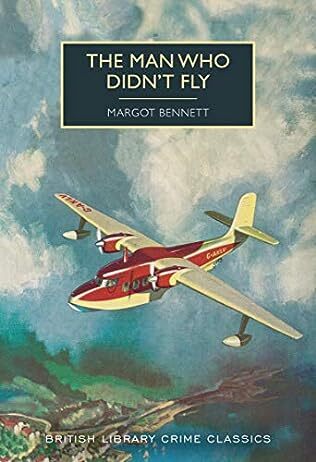The Man Who Didn’t Fly

A review of The Man who didn’t Fly by Margot Bennett – 230803
Scottish-born Margot Bennett is another new author to me and even if she did not write many works of crime fiction, she developed an impressive reputation, only to fall into obscurity. Like Christopher St John Sprigg she was involved in the Spanish Civil War, serving in a British medical unit, but unlike Sprigg she lived to tell the tale. Originally published in 1955 and reissued as part of the British Library Crime Classics series, The Man who didn’t Fly is an impressive and unusual piece of fiction.
It is structured rather like one of those fiendish mindbenders you find in the puzzle sections of newspapers, full of conditional clauses giving snippets of information which, if you work your way through them in a logical fashion, lead you to the answer. Aping an aircraft, the story takes off at speed with an intriguing set up. A private plane has crashed into the Irish Sea, killing its pilot and three passengers. However, there were meant to be four passengers and as well as the fourth not coming forward, none of the witnesses who saw the three passengers before they boarded – no passports were needed to travel to Ireland – cannot give definitive evidence as to which three of the four meant to be on the plane boarded it.
Inspector Lewis and Sergeant Young are given the unenviable task of solving the mystery of who was on the flight. Their early attempts to gather information from staff at the airport and from a couple of drinkers in the pub they met at just before boarding seem to be unsatisfactory but as the story progresses to its denouement there are snippets of value in their testimonies. Bennett plays fair with her reader by ensuring that all the information that you need to identify who was on board is contained in the various testimonies if you pay attention.
The main part of the book concerns itself with the evidence of the Wade family, who hosted each of the four passengers in the days leading up to the doomed flight. This section, rather than being in the form of individual testimonies or straightforward answers to questions, takes the form of a reconstruction of the interactions between the Wade family and the four passengers as a form of narrative. This works well, allowing the reader to gain insights not only to the characters of the Wade family, financially hard-pressed and naive, Charles, and his two lively daughters, but also the complex and sometimes fraught relationships between the four passengers, Maurice Reid, something in the City who is suspected of wanting to con Wace out of his remaining money, Morgan, a highly-strung dipsomaniac with something to hide, the ne’er-do-well poet, Harry, and Uncle Joe who runs a chain of failing cinemas and is looking to expand in Ireland.
As well as establishing the identity of the three passengers, there is also the mystery of what happened to the fourth. Add into the mix two mysterious strangers, one with a vendetta against Maurice who had financially ruined his mother and an opportunist thief going by the self-proclaimed name of Jackie Daw and you have another fascinating plot line. Rose petals and a vault in a ruined chapel brings this aspect of the case to a conclusion, although Bennett cleverly leaves some points hanging in the air.
Bennett’s style was brisk and workmanlike, painting her characters with deft strokes and not some little humour. I enjoyed the exchanges between the two policemen with the sharp and more culturally aware junior, Young, more attuned to the intricacies of the case. This is not your ordinary piece of crime fiction and was all the better for that.



